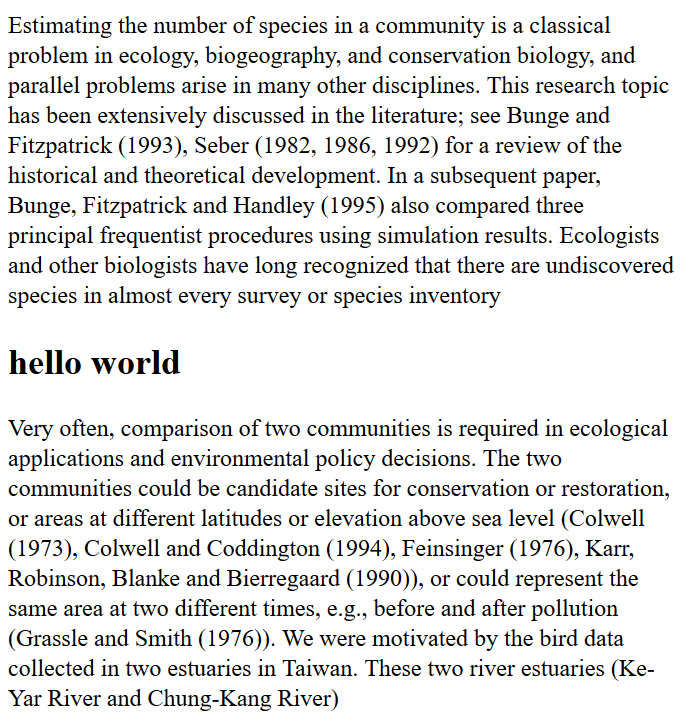在html 语言中,通过h1-h6 共6个标签来展现标题,每个标题占一行;
<!DOCTYPE html> <html> <head> <title></title> </head> <body> <h1>hello world</h1> <h2>hello world</h2> <h3>hello world</h3> <h4>hello world</h4> <h5>hello world</h5> <h6>hello world</h6> </body> </html>
效果如下:

从h1到h6, 文字的大小逐渐变小;
在网页上呈现的时候,会自动在标题的前面和后面加上空行
代码如下:
<!DOCTYPE html> <html> <head> <title></title> </head> <body> Estimating the number of species in a community is a classical problem in ecology, biogeography, and conservation biology, and parallel problems arise in many other disciplines. This research topic has been extensively discussed in the literature; see Bunge and Fitzpatrick (1993), Seber (1982, 1986, 1992) for a review of the historical and theoretical development. In a subsequent paper, Bunge, Fitzpatrick and Handley (1995) also compared three principal frequentist procedures using simulation results. Ecologists and other biologists have long recognized that there are undiscovered species in almost every survey or species inventory<h2>hello world</h2>Very often, comparison of two communities is required in ecological applications and environmental policy decisions. The two communities could be candidate sites for conservation or restoration, or areas at different latitudes or elevation above sea level (Colwell (1973), Colwell and Coddington (1994), Feinsinger (1976), Karr, Robinson, Blanke and Bierregaard (1990)), or could represent the same area at two different times, e.g., before and after pollution (Grassle and Smith (1976)). We were motivated by the bird data collected in two estuaries in Taiwan. These two river estuaries (Ke-Yar River and Chung-Kang River) </body> </html>
效果如下:
